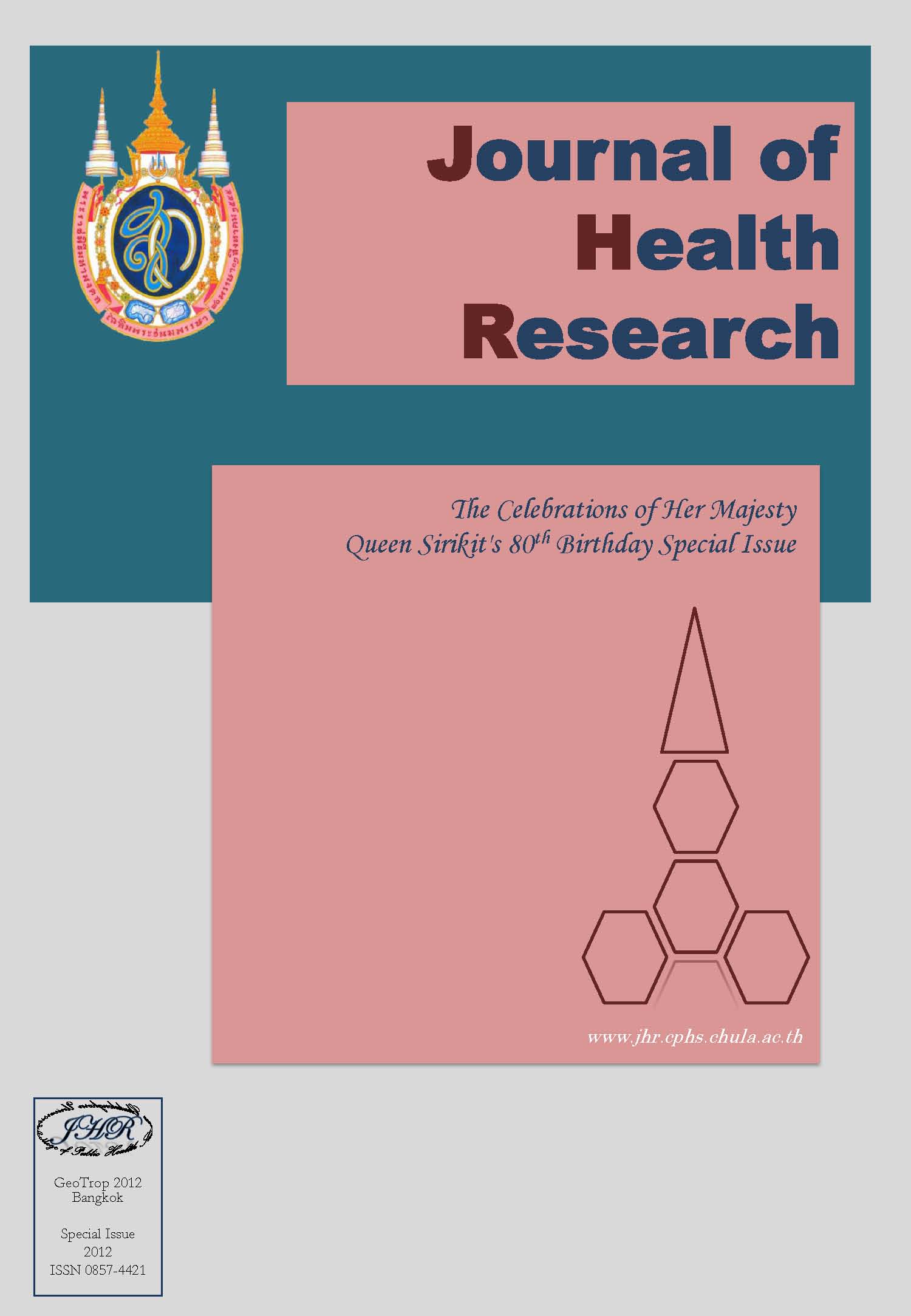Insecticide Use, Protective Behavior, Serum Cholinesterase Levels, And Health Effects Among Rice Farmers In Kongkrailat District, Sukhothai Province, Thailand
Keywords:
insecticides, protective behavior, health effects, serum cholinesterase, rice farmersaAbstract
The objective of this cross-sectional analytical research was to identify and assess the health effects of insecticide use among rice farmers, including socio-demographic factors, insecticide use history, knowledge, attitude, self-protective behaviors, serum cholinesterase (SChE), and pesticide-related symptoms among 182 rice farmers in Kongkrailat District, Sukhothai Province, Thailand. The data were collected using standardized, pre-tested questionnaires. The subjects were selected by multi-stage sampling carried out in January 2012. Descriptive statistics were presented as percentage, mean, and standard deviation (S.D.). Chi-square statistics were calculated to examine the relationships between the variables. The study results showed that 53.3% of the subjects were female, the average age was 45 years, the average farm size was 14.5 acres, 95.6% had never been trained in safe use of pesticides, the average number of years of mixing or applying pesticide was 16.5 years, the average number of days used were 36.8 days, the duration of each spraying was an average of 3.46 hours, and 91.2% mixed pesticides of ≥3 kinds. The insecticides used were organophosphate group: chlorprifos (93.4%); carbamate group: methomyl (68.1%); pyrethroid group: cypermethrin (52.2%); and avermectin group: abamectin (98.9%). Furthermore, 57.7% had high knowledge level, while 51.1% had low-level attitude regarding safe use of pesticide. Total protective behavior scores were 69, which were divided into three groups: when mixing, when applying, and after using pesticides. The mean score was used to separate low and high levels. Most of the subjects had high-level score when mixing (57.1%) and after using (69.2%), and low-level score when applying (51.1%).The SChE levels were measured by reactive paper from Ministry of Public Health, and divided into four levels: normal, safe, risky, and unsafe. We found that 97.8% of the subjects come under risky or unsafe levels. The health effects were measured as self-reported pesticide-related symptoms during or within 24 hours after application of pesticide, including five organ systems: neuromuscular, respiratory, digestive, eyes, and skin. We found that 86.8% of the subjects had pesticide-related symptoms. Most of the symptoms were neuromuscular (79.1%). Furthermore, attitude, SChE levels, and protective behavior were found to be associated with pesticide-related symptoms. Thus, these findings suggest that health promotion should be concerned about protective behaviors, and that rice farmers need intervention to improve protective behaviors and reduce health risk of pesticide use.







